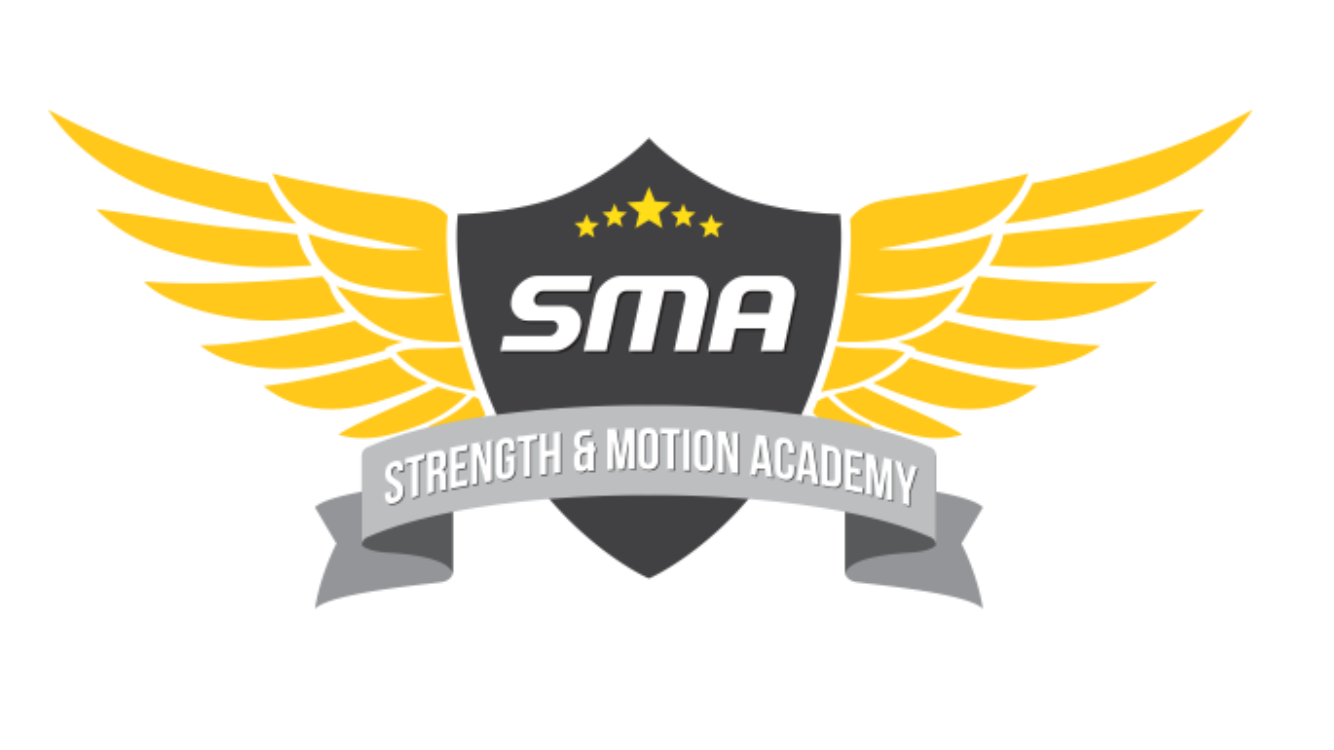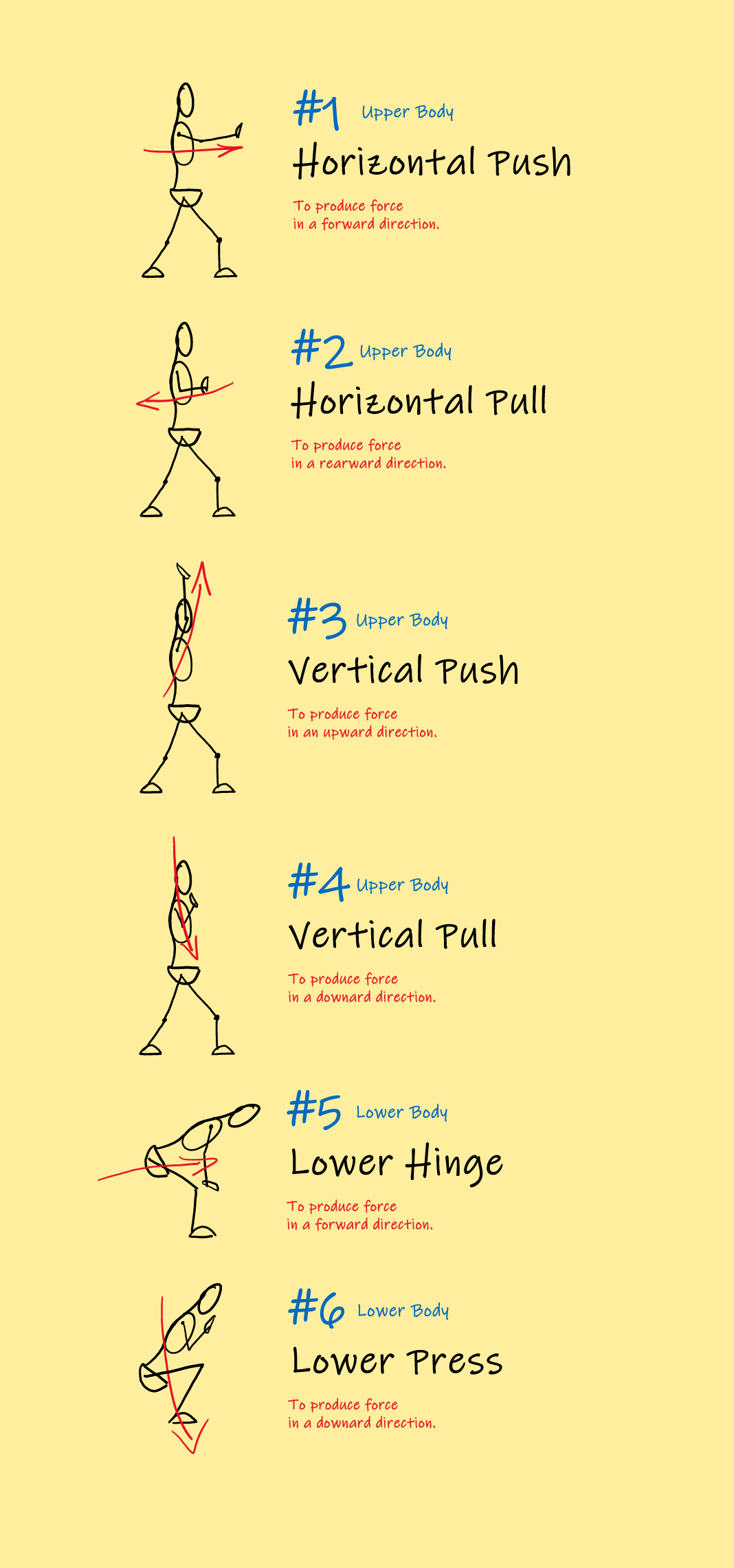The Big 6
The 6 most important movements in the gym
As humans, we all share the same anatomy.
The standard homo sapien has 1 head, 1 torso, 2 arms, 2 legs, and a chest full of the same organs such as a heart, lungs, and stomach.
In terms of movement, our bodies are designed to push, pull, run, jump, climb, sit and walk.
So although we humans may have different life goals, careers, and duties, our bodies all share the same principles that govern how we move.
Regardless if you wish to lose weight to feel healthy, or become a faster athlete, the body must build its foundational strength so that it can do the exercises that yield our desired result.
When building strength in the gym, we build our training programs off the philosophy that our bodies are designed to move in a similar way.
Here at Strength & Motion Academy, we teach our clients The Big 6. These are 6 primary movement patterns that when trained, give our bodies a very strong functional base for improving strength, posture, aesthetics, speed, and power (and yes, even weight loss).
If you take the time to learn the Big 6, you will learn that the majority of the 500+ exercises commonly seen within a gym are a variation of the Big 6, another reason to prioritize this learning.
The Big 6 has two categories:
Upper body movements (first 4)
Lower body movements (last 2)
The Big 6 Infographic
For each of these movement patterns, we encourage you to take as much time as you need to learn these movements. Learning and feeling movement is the priority here.
The better you understand these movements within your body, the faster you will pick up every new exercise, and therefore achieve your body goals faster.
Below we will go into further detail on these movements.
HORIZONTAL PUSH
Movement focusing on the chest and tricep muscle
This movement focuses on the chest and triceps muscles to be able to push an object away from ourselves or being able to perform a push-up.
Other exercises:
Push-ups
Bench press
Barbell Push Up
Life examples: Pushing people off/away from you, pushing a broken down vehicle, breaking your fall.
HORIZONTAL pull
Movement focusing on the back muscles and biceps
The functional movement responsible for pulling an object towards us. The muscles used predominantly in this exercise are the back and bicep muscles, however, the movement can be manipulated through arm & hand positioning to focus on different parts of the back.
Other Exercises
Bent over row
Seated row
Lying row
Life examples: Pulling a door open, Tug of War, rowing, holding your body against the wall during rockclimbing.
VERTICAL PUSH
Vertical pushing movements focus on the shoulders and core stability to push a weight or object above head whilst maintaining stability. This movement is great for working your core stability as well as providing healthy progressive overload to the shoulders when done correctly.
Other vertical push movements:
Military press / Overhead Press
Handstands
Neutral grip Shoulder press
Life examples: Lifting up children or small items above your head.
VERTICAL pull
Movement focusing on contraction of the latissimus dorsi (lats.) and lower trapezius muscles.
The vertical pull is the movement focussing on pulling ourselves upwards, or an object downwards towards ourselves. It is a strong movement which involves the contraction of the latissimus dorsi (or the lats for short) and is necessary to be able to do a pull-up.
Other Vertical pull movements
Pull up
Machine pull down
Lat Pull Over
Life Examples: Climbing, pulling/holding things towards you.
Lower Hinge (hip dominant)
Hip based Movement (Hinge), in which the Glutes and Hamstrings muscles lengthen and contract.
Hinge movements are a core functional movement that when done correctly, uses the glutes and hamstrings for hip extension in order to keep our bodies upright. They are important to learn correctly, as incorrect technique can lead to pain and incorrect posture, but correct technique can help lower back pain and improve overall posture and health.
Other Hinge movements:
Conventional Deadlift
Romanian Deadlift
Hip extension Machine
Life examples: Picking something off the floor, walking, moving forward.
Lower press (knee dominant)
Knee Based movement (Knee)
Knee based or squat based movements are an important functional movement that we use on a day to day basis. It is important to learn these correctly as correct form and proper progressive loading can have great health benefits with our lower extremities.
Other squat movements:
Front squat
Goblet Squat
Box Squat
Life Examples of movement: Standing/sitting on a chair, jumping, stepping up.

